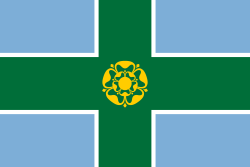| Sheldon | |
|---|---|
 | |
Location within Derbyshire | |
| OS grid reference | SK173687 |
| District | |
| Shire county | |
| Region | |
| Country | England |
| Sovereign state | United Kingdom |
| Post town | BAKEWELL |
| Postcode district | DE45 |
| Dialling code | 01629 |
| Police | Derbyshire |
| Fire | Derbyshire |
| Ambulance | East Midlands |
| UK Parliament | |
Sheldon is a village and civil parish in the Derbyshire Peak District, England, near Bakewell. It is best known for being the closest village to Magpie Mine, a lead mine with an engine house built in the Cornish style. Lead mining flourished around here in the 18th and 19th centuries. It is now scheduled as an ancient monument, and is the most complete example of a lead mine remaining in the Peak District. It is about 1050 feet above sea level.
Contents
The parish church of St Michael and All Angels was erected in the 19th century with material derived from dismantling the former Chapel of Ease.
 |  |


